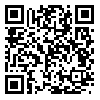Fri, Oct 17, 2025
Volume 19, Issue 1 (Winter & Spring 2022)
ASJ 2022, 19(1): 33-38 |
Back to browse issues page
Download citation:
BibTeX | RIS | EndNote | Medlars | ProCite | Reference Manager | RefWorks
Send citation to:



BibTeX | RIS | EndNote | Medlars | ProCite | Reference Manager | RefWorks
Send citation to:
C N J, Muraleedharan A, J.P G, Devi R. Morphometric Analysis of Accessory Sutural Bones Association With Parietal Emissary Foramina. ASJ 2022; 19 (1) :33-38
URL: http://anatomyjournal.ir/article-1-299-en.html
URL: http://anatomyjournal.ir/article-1-299-en.html
1- Depaetrment of Anatomy, Pondicherry Institute of Medical Sciences, Puducherry, India.
Abstract: (2627 Views)
Introduction: The sutural bones and fontanelle of the skull display unique morphological characters. Sutural bones are also called supernumerary bones, ossicles, or Wormian bones (WBs). These irregularities develop from the independent ossification centers present along the cranial sutures. They appear on periosteal and endosteal surfaces of the skull with variations in size, number, shape, and location. In the current study, we aimed to determine the morphological characteristics of sutural bones and their association with parietal emissary foramina.
Methods: The current study was done on 128 dry human skulls by a convenient sampling method. The skulls were collected from the Department of Anatomy. Many characteristic features of Inca and Wormian bones like shape, number, size, and location were recorded, including abnormal parietal emissary foramen associated with the Wormian and Inca bone, respectively.
Results: Out of 128 dry skulls, the Wormian bones were seen in 13.2% of skulls and the Inca bones in 5.4%. Incorporation of Wormian bones in the lambdoid suture was noted in 12.5% and the sagittal suture at 0.7%, respectively. The Wormian bones were found frequently on the left side (n=12) compared to the right side (n=5). The morphometry of the accessory bones showed quadrilateral as the most common shape (n=9, 37.5%), followed by triangular (n=4, 16.6%). Radiological examination of all 24 skulls with accessory bones showed a zigzag pattern of accessory suture lines. The prevalence of abnormal parietal emissary foramen (bilateral and unilateral absence associated with the Wormian bone was noted at 23.5%. The prevalence of abnormal parietal emissary foramen (unilateral absence and foramen on the sagittal suture) related to the Inca bone was reported at 71.4%.
Conclusion: The presence of Wormian and Inca bones can be easily confused with fractures of the corresponding bony regions. The surgeons must know this to make a proper and accurate diagnosis. Knowledge of these bones benefits the clinician, radiologist, and neurosurgeon highly.
Methods: The current study was done on 128 dry human skulls by a convenient sampling method. The skulls were collected from the Department of Anatomy. Many characteristic features of Inca and Wormian bones like shape, number, size, and location were recorded, including abnormal parietal emissary foramen associated with the Wormian and Inca bone, respectively.
Results: Out of 128 dry skulls, the Wormian bones were seen in 13.2% of skulls and the Inca bones in 5.4%. Incorporation of Wormian bones in the lambdoid suture was noted in 12.5% and the sagittal suture at 0.7%, respectively. The Wormian bones were found frequently on the left side (n=12) compared to the right side (n=5). The morphometry of the accessory bones showed quadrilateral as the most common shape (n=9, 37.5%), followed by triangular (n=4, 16.6%). Radiological examination of all 24 skulls with accessory bones showed a zigzag pattern of accessory suture lines. The prevalence of abnormal parietal emissary foramen (bilateral and unilateral absence associated with the Wormian bone was noted at 23.5%. The prevalence of abnormal parietal emissary foramen (unilateral absence and foramen on the sagittal suture) related to the Inca bone was reported at 71.4%.
Conclusion: The presence of Wormian and Inca bones can be easily confused with fractures of the corresponding bony regions. The surgeons must know this to make a proper and accurate diagnosis. Knowledge of these bones benefits the clinician, radiologist, and neurosurgeon highly.
Keywords: Interparietal bones, Inca bones, Accessory bones, Sutural bones, Supraoccipital bones, Parietal emissary foramen
Type of Study: Original |
Subject:
Morphometry
Received: 2021/11/2 | Accepted: 2021/12/18 | Published: 2022/01/1
Received: 2021/11/2 | Accepted: 2021/12/18 | Published: 2022/01/1
Send email to the article author
| Rights and permissions | |
 |
This work is licensed under a Creative Commons Attribution-NonCommercial 4.0 International License. |




